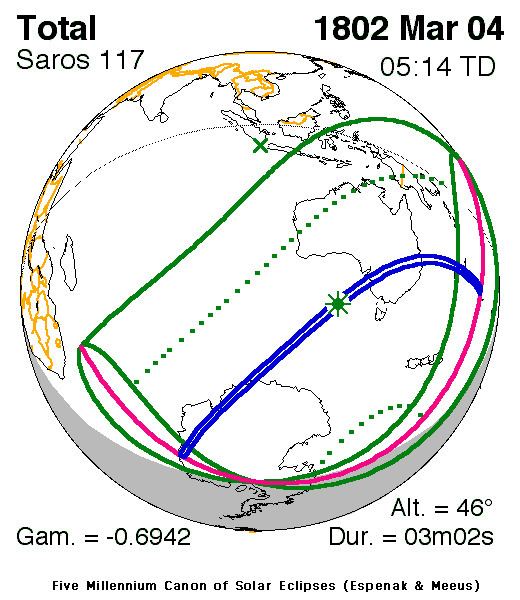Nature Total Magnitude 1.0428 Max. width of band 196 km (122 mi) Date 4 March 1802 | Gamma -0.6943 Duration 182 sec (3 m 2 s) Greatest eclipse 5:14:29 | |
 | ||
Other Instances Solar eclipse of April 8 - 2, Solar eclipse of July 2 - 20, Solar eclipse of August 2, Solar eclipse of March 9, Solar eclipse of March 20 | ||
A total solar eclipse occurred on March 4, 1802. A solar eclipse occurs when the Moon passes between Earth and the Sun, thereby totally or partly obscuring the image of the Sun for a viewer on Earth. A total solar eclipse occurs when the Moon's apparent diameter is larger than the Sun's, blocking all direct sunlight, turning day into darkness. Totality occurs in a narrow path across Earth's surface, with the partial solar eclipse visible over a surrounding region thousands of kilometres wide. The eclipse was visible in Indonesia, Papua New Guinea, Australia, New Zealand and Antarctica, while the totality was seen in Australia and Antarctica.
References
Solar eclipse of March 4, 1802 Wikipedia(Text) CC BY-SA
